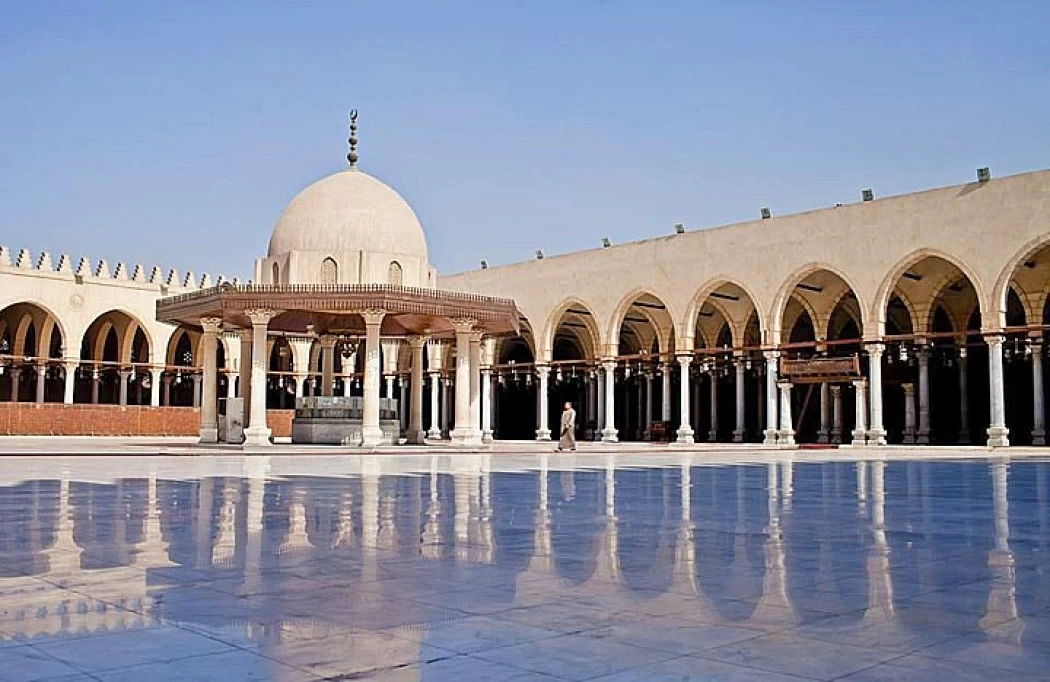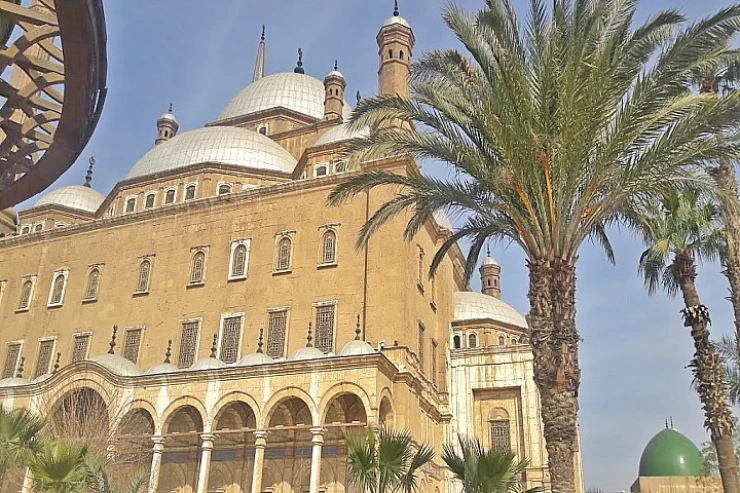
Amr bin Al-Aas | First mosque and religious school
First mosque and religious school
The original structure of this mosque was built on the site where Amr ibn al-Aas pitched his tent, and was built from palm trunks and leaves, then expanded to its current size in 827 AD.
Amr ibn al-As Mosque: Located east of the Nile, the mosque occupies a section measuring 50 cubits by 30 cubits. It was built in the city of Fustat during the Muslim era following the conquest of Egypt. It was also known as the Old Mosque, the Mosque of the Conquest, or the Mother of All Mosques. Among many other subsequent additions, the mosque included four minarets and six doorways.
The Amr ibn al-As Mosque was constructed in 568 AH, and when Salah al-Din al-Ayyubi conquered Egypt in the twelfth century, he ordered its reconstruction, including the replacement of the large mihrab and the installation of engraved marble tiles.
Initially, what is now known as the Amr ibn al-Aas Mosque occupied a simple construction measuring 45 meters long and 27 meters wide. Its wall construction was made of unplastered bricks, palm tree trunks were used for the columns, the ranging trunks served as the roofs with the palm trees having several openings acting as doors to the building.
The Amr ibn al-Aas Mosque’s architectural design was similar to that of the Prophet’s Mosque where the mosque was built without leaving out any details in its design seeking to promote the Islamic ethos. In this regard, emphasis was not placed on building structures even though justice appreciated them, and so a shade was constructed for the comfort of the believers from the sun, rain, and other elements.
The Amr ibn al-Aas Mosque has many important things that were performed in the mosque, including the following:
- Performing the five religious duties.
- Holding the Judicial Council meeting in the mosque.
- Holding story councils.
- Holding science circles, which reached 110 science circles in the fourth century AH (tenth century AD), and special circles were dedicated to women, and these councils were led by the preacher of her time, Umm al-Khair al-Hijaziya.
- All these things made the Amr ibn al-Aas Mosque the oldest university in Egypt, almost 600 years before Al-Azhar Al-Sharif, which followed it















